The ASRock Z170 Extreme7+ Review: When You Need Triple M.2 x4 in RAID
by Ian Cutress on November 27, 2015 11:59 AM EST- Posted in
- Motherboards
- ASRock
- M.2
- Skylake
- Z170
ASRock Z170 Extreme7+ Software
In the beginning of this review, during the overview, I expressed concern that the ASRock software package had experienced the equivalent of a malignment over its direction. For the last few generations, we had one major software package (A-Tuning) which housed links to all the separate features in ASRock’s repertoire. This is good, as it minimizes the icons on the main screen and gives everything an easy path to access. It only works well of course if the software is light, clean, quick to respond and easy to use, which for the most part it was. So it leaves me scratching my head when A-Tuning has been gutted and all the useful tools in it have become their own separate software elements.
The front face of A-Tuning remains the same, with options for a performance mode overclock (constant Turbo), standard mode (normal) and power saving (slow ramp up to full speed). Selecting performance mode gives an advanced OC options menu that offers the same auto-OC modes as we saw in the BIOS:
Instead of seeing a tools menu next, A-Tuning gets the OC Tweaker menu.
Personally, I find this overclock menu a little mind-numbing to use. For overclocking like this, all the options should be in a single screen without scrolling down to find them, and in this circumstance having a sliders with no manual text input reduces the usefulness for all but the most persistent ASRock hardcore overclockers.
The System Info tab has its usual array of sensor information, as well as a link to the system browser.
In this new A-Tuning, Fan-Tastic Tuning gets its own main tab, offering both manual gradient adjustment and fan testing to find RPM deadzones within a fan profile. Other features in A-Tuning include Tech Service and a basic settings menu.
So where did all of A-Tuning’s fun tools disappear to? Well for a number of important ones, these migrate out to having their own icons, despite a number of them still retaining the A-Tuning design.
XFastLAN, which is ASRock’s skin over cFos’ network management software, still exists but again, similar to OC Tweaker, unless you are using the presets provided it becomes frustrating to use by virtue that the interface size is non-adjustable, so you can only see the priority of four programs at once.
The Dehumidifier function also gets pulled out into a separate program, with a funky red fire based taskbar.
XFastRAM, ASRock’s RAMDisk and caching software also becomes separate, with another fire based motif at the top.
But for ASRock’s software package, it ends there. No Online Management Guard software for the OS, no Good Night LED option, no all-in-one interface at all. I’m puzzled as to why – the previous concept was good enough to use. Basic options such as a resizable interface were my primary concerns, and half of me is hoping that the only reason these have been extracted from the main interface is because a new A-Tuning design is on the way. Fingers crossed.



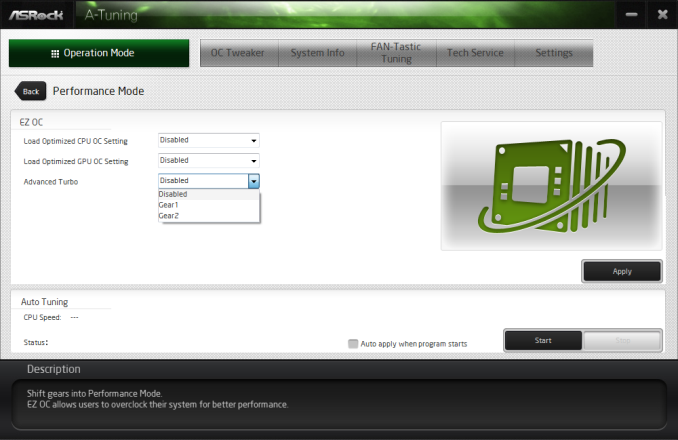
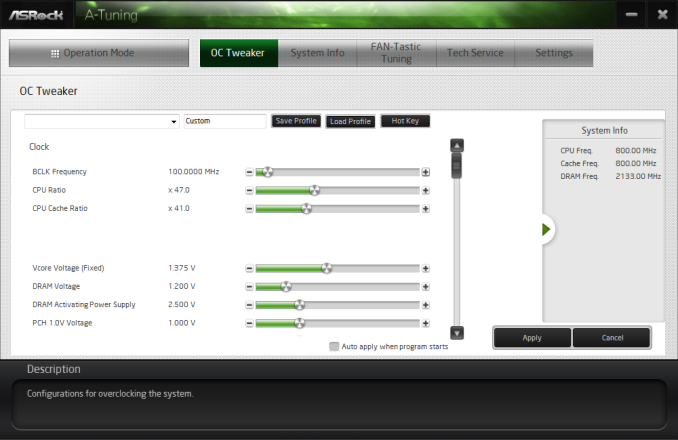
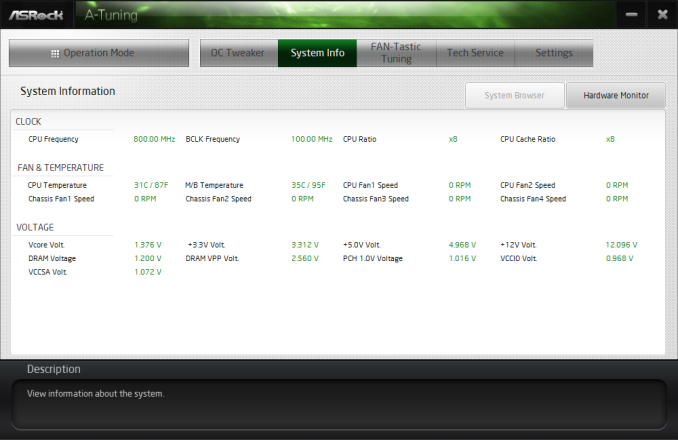
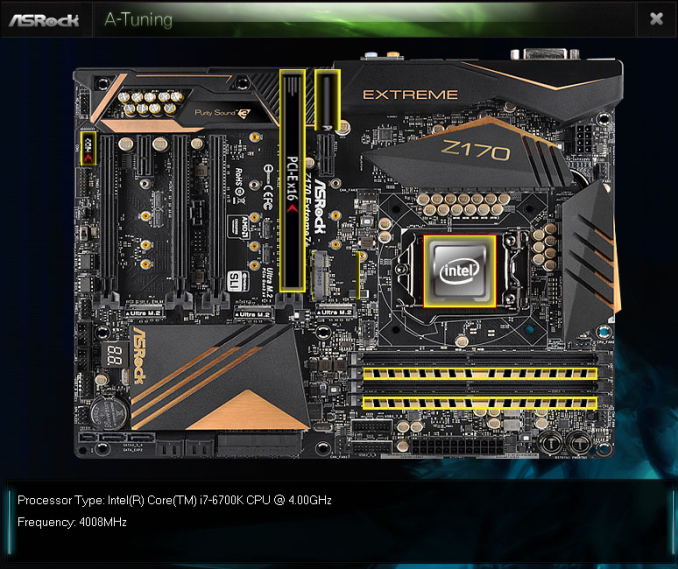
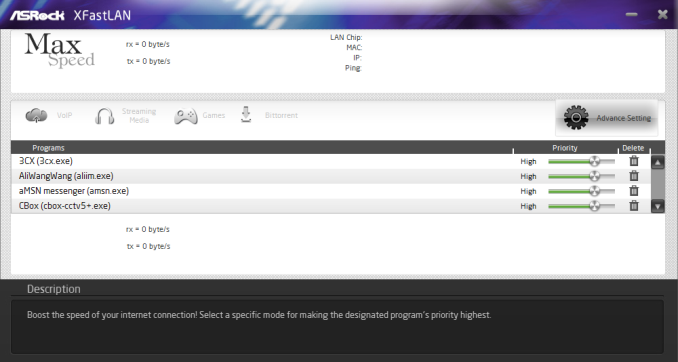
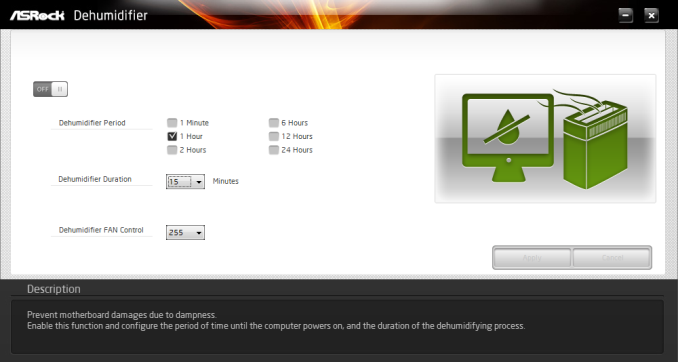
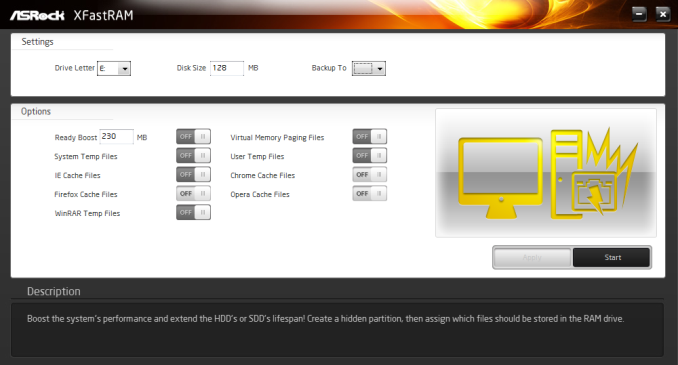














63 Comments
View All Comments
DanNeely - Monday, November 30, 2015 - link
Immediate availability isn't a concern, and I'd rather have a 2x type C model anyway (Asus has announced one, but it's a 5.25" bay enclosure for a full height expansion card making it a bit of a WTF); I probably won't have a USB-C device until late summer/early fall of next year.If these can be made usable with Haswell at all is a bigger concern for me. I know I'd be bandwidth limited and only able to hit max speed on one port if the second is idle; but that's a limitation I could live with.
pedjache - Monday, November 30, 2015 - link
It's actually ASmedia controller that drives the front panel, so apart from the fact that using SATAexpress will probably disable 2 of your SATA ports, I see no other concern on usability with haswell.nunya112 - Friday, November 27, 2015 - link
how many layers in the motherboard? is there copper etc.??ASROCK interests me, as they are better priced. if they start to have better components etc. and now the only issue I have is the motherboards are usually thin, and quite flexible
extide - Monday, November 30, 2015 - link
Why do you care about the # of layers? Do you mistakenly think that more is better?tuxRoller - Saturday, November 28, 2015 - link
How many samples did you use to determine that dpc time?careyd - Saturday, November 28, 2015 - link
Ian, love the article, read every word, studied every chart. Desperate to see the headline feature of triple M2 RAID benchmarked. Preferably with Samsung 950's, since I think adapting to the Intel 750's is a lot less elegant despite the possibility of greater performance. This type of arrangement should saturate anyway. But want to see throughput and IOPS numbers. Also, if this beggar can be a chooser, I'd love to see benchmarkes of two of the M.2's striped, with a third running solo. I could envision a number of reasons why this configuration might be a preferable, having a solo M.2 for system drive and the striped pair for other data intensive tasks/media/etc. I think it would make a heck of a cache drive for Adobe After Effects.TesseractOrion - Sunday, November 29, 2015 - link
I think I'd choose striped for OS, solo for redundancy instead, I'd want the OS to be as responsive as humanly (computerly) possible.jasonelmore - Sunday, November 29, 2015 - link
what a waste. the OS is never going to need 2.1GB Per second write and reads. Only a scratch disk or video editing app would use it, then you might as well use careyd configurationmurak01 - Sunday, November 29, 2015 - link
A few tests with three 950 Pro in RAID0 would be interesting. Thanks for a good review!Reflex - Sunday, November 29, 2015 - link
Right now you can pick up 250GB Samsung 850 EVO M.2 SSD's for only $79 at Newegg and Amazon. Given that this board is $220, dropping $240 on storage is not ridiculous and should perform exceptionally well.